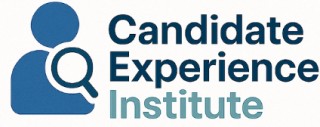
Understanding the Role of Intake Meetings
Grasping the Importance of Preliminary Discussions
The significance of intake meetings in the hiring process cannot be overstated. These preliminary discussions serve as a fundamental step in aligning all stakeholders with the recruitment strategy. During these meetings, the hiring manager and recruiters come together to clarify the job requirements and define the ideal candidate profile. This collaborative approach ensures that everyone involved has a shared understanding of the expectations and goals for the recruitment process. Intake meetings play a pivotal role in shaping a comprehensive job description. By engaging in open dialogue, the hiring team can identify the essential qualifications and skills needed for the position, as well as any additional attributes that could be advantageous. This step not only aids in crafting job ads that attract top talent but also establishes a foundation for a more efficient interview process. Moreover, intake meetings help streamline the recruitment process by minimizing miscommunication between the hiring manager and the recruiting team. By discussing key topics such as the interviewing process, candidate evaluation criteria, and timeline expectations, these meetings reduce the likelihood of discrepancies and ensure a smoother recruitment journey. Incorporating intake meetings as a regular aspect of the talent acquisition process enhances the overall candidate experience by promoting transparency and consistency. This proactive approach allows for a more structured recruiting intake, ultimately leading to more successful hires for the organization. For more insights on enhancing candidate experience in different sectors, such as retail store operations, you can explore relevant strategies here.Key Elements of a Successful Intake Meeting
Critical Components of an Effective Intake Discussion
In the recruitment process, the intake meeting plays a crucial role in aligning the hiring team’s objectives for achieving successful candidate experiences. To make these meetings productive and impactful, it is essential to incorporate certain key elements.- Clear Job Requirements: In order to establish a strong foundation for the recruitment strategy, it is critical to define clear and concise job requirements. This includes outlining the ideal candidate profile and specific skills needed for the role. These initial decisions guide recruiters in targeting the right candidates during the recruiting intake.
- Engagement of Key Stakeholders: For an intake meeting to run smoothly, the involvement of all relevant recruiters, hiring managers, and key decision-makers is essential. Their collective input ensures the alignment of expectations for the recruitment process and lays the groundwork for an efficient hiring process.
- Setting Realistic Timelines: Collaboratively establishing practical timelines for each stage of the interview process is vital. This helps in managing the expectations of all parties involved, including the candidates, and minimizes potential delays in the recruiting process.
- Constructive Questioning: It is beneficial to craft questions that allow deep insight into the hiring manager’s vision for the role and any nuanced requirements that might not be immediately apparent from the written job description. Leveraging effective persona questions can enhance understanding and precision in candidate selection.
- Documentation and Follow-Up: Properly documented meetings provide a reference point throughout the recruitment journey. Making it a practice to summarize and share the insights gained from these meetings can facilitate collaborative decision-making and maintain transparency within the hiring team.
Communication Strategies for Intake Meetings
Mastering Communication for a Seamless Intake Process
Effective communication strategies play a crucial role in the success of intake meetings within the recruitment process. It's not just about discussing job requirements or ideal candidate profiles but ensuring that every member of the hiring team, from recruiters to hiring managers, is on the same page regarding expectations and roles. To streamline communication:- Prepare Thoroughly: Before meeting with the hiring manager, recruiters should review the job description and candidate profile. Understanding the nuances of the role and aligning them with the recruitment strategy will set the foundation for a productive meeting.
- Ask Key Questions: This isn’t just about filling a position but understanding the broader implications on the team and company. Questions should delve into the specifics of the job and explore the team dynamics, challenges, and goals within the role.
- Clarify Roles and Responsibilities: Ensure everyone knows what their responsibilities are within the hiring process. Defining clear roles within the team prevents overlaps and ensures smooth workflow.
- Utilize Tools for Collaboration: Leverage technology to streamline communication. Whether it's through a shared document platform or a project management tool, making information readily accessible to all ensures transparency and consistency.
Addressing Challenges in Intake Meetings
Overcoming Obstacles in Effective Meetings
In the journey to refine candidate experience, intake meetings play a crucial role, integrating various facets of the recruitment process. However, challenges often arise that require prompt and efficient handling. Identifying potential obstacles beforehand can greatly enhance these meetings. One common challenge during intake meetings is misalignment between hiring managers and recruiters. They may have differing expectations regarding the ideal candidate profile or job requirements. To preempt this, a clear and concise job description should be jointly developed. This unified approach ensures alignment on the recruitment strategy and the attributes deemed vital for the role. Another issue is ineffective communication. This often hampers the meeting intake process, leading to misunderstandings. Employing structured communication strategies is critical to facilitate open and collaborative dialogue. Encouraging questions from both recruiters and hiring managers will further clarify doubts and cultivate a unified recruitment process. Time constraints can also pose significant challenges. With packed schedules, key stakeholders might not dedicate enough time to the intake meeting. In such cases, setting a strict agenda and sticking to it ensures efficient use of the allocated time, thereby smoothing out the entire recruiting intake process. Lastly, the evolving candidate market demands flexibility and adaptability. Being too rigid with the candidate profile can hinder the ability to attract diverse talent. Flexibility in assessing the candidate's potential to grow into the role can expand the pool of candidates considered for hire, ultimately enriching the interview process. Addressing these challenges comprehensively aids in enhancing the nuances of the recruitment process, not only ensuring a seamless intake meeting but also strengthening the foundation for a positive candidate journey. This collaborative effort between the hiring team and recruiters sets the stage for a robust talent acquisition framework.Integrating Technology in Intake Meetings
Leveraging Technology for Streamlined Intake Meetings
In today's fast-paced recruitment environment, integrating technology into intake meetings can significantly enhance the candidate experience. By utilizing digital tools, hiring managers and recruiters can streamline the process, ensuring that the meetings are efficient and productive. Here are some ways technology can play a pivotal role in improving intake meetings:
- Scheduling Tools: Using scheduling software can simplify the coordination of intake meetings, making it easier for recruiters and hiring managers to find suitable times without the back-and-forth of emails.
- Video Conferencing Platforms: For teams spread across different locations, video conferencing tools allow for seamless communication, ensuring that all stakeholders can participate in the intake meeting regardless of their physical location.
- Digital Note-Taking: Applications for digital note-taking can help recruiters and hiring managers document important points discussed during the meeting, which can then be easily shared with the team.
- Collaboration Software: Tools like project management and collaboration platforms enable teams to work together on the recruitment process, keeping everyone aligned on the job requirements and candidate profiles.
- Data Analytics: Leveraging analytics tools can provide insights into the recruitment process, helping to measure the effectiveness of intake meetings and make data-driven decisions to improve future meetings.
By incorporating these technologies, the recruiting team can ensure that intake meetings are not only more efficient but also more aligned with the overall recruitment strategy. This approach helps in setting clear expectations and fosters a collaborative environment, ultimately enhancing the candidate experience.













